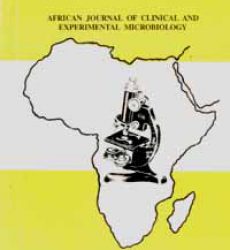1Olajide, O. A., *1Kolawole, O. M., 1Bada-Siyede, I. B., 1Ayanda, O. O., and 1,2Suleiman, M. M.
1Infectious Disease and Environmental Health Research Group, Department of Microbiology, Faculty of Life Sciences, University of Ilorin, Nigeria 2Department of Biological Sciences, College of Natural and Applied Sciences, Summit University, Offa, Nigeria *Correspondence to: tomak7475@gmail.com; omk@unilorin.edu.ng; +234-8060088495
Abstract:
Background: Antibiotic resistance in microorganisms implicated in nosocomial respiratory infections is a major reason for prolonged hospital stay and increased cost of therapeutic treatment of hospital acquired pneumonia (HAP). This study was designed to isolate bacterial pathogens colonizing the throat of hospitalized patients at the Sobi Specialist Hospital, Ilorin, and to evaluate antibacterial effects of extracts of Citrus aurantifolia peel and Alum against these bacterial isolates.
Methodology: This was a cross sectional study of 100 randomly recruited hospitalized patients at the Sobi Specialist
Hospital, Ilorin, Nigeria. Throat samples collected from consenting participants were cultured on selective agar media (MacConkey, Eosin-Methylene blue and Mannitol salt) for isolation of bacteria. Identification of isolates from culture plates was done by Gram reaction and conventional biochemical tests while confirmation of the isolates was done by the polymerase chain reaction (PCR) assay. Antibiotic susceptibility test for each isolate to selected antibiotics (ampicillin, amoxicillin-clavulanate, cefuroxime, ceftazidime, gentamicin, nitrofuran, ofloxacin and ciprofloxacin) was done by the Kirby Buer disc diffusion method. Aqueous extract of Alum ([KAl(SO4).12H2O]) was done to produce concentrations of 10, 20, 30, 40 and 50% (w/v) at pH 3.6 and tested on the bacterial isolates using agar diffusion method. Citrus aurantifolia peel was extracted using methanol and hexane solvents to produce extract concentrations of 500mg/ml, 250mg/ml and 150mg/ml, and tested on the isolates by agar diffusion, and by the broth dilution method to obtain minimum inhibitory (MIC) and minimum bactericidal concentrations (MBC) of C. aurantifolia. Continue reading “Characterization of bacteria isolates colonizing the throat of hospitalized patients at Sobi Specialist Hospital, Ilorin, Nigeria and in vitro antimicrobial effects of Citrus aurantifolia and Alum on the isolates”

